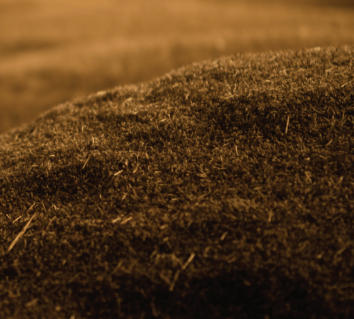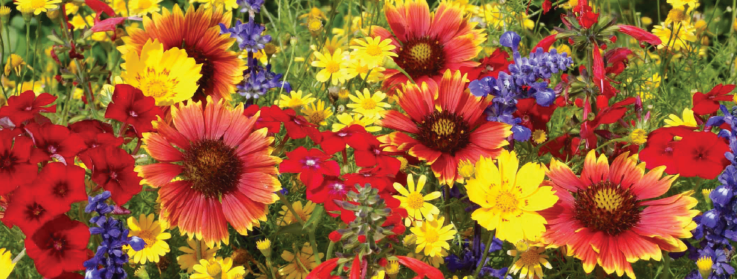Resources
NATIVE SEED PLANTING RECOMMENDATIONS FOR SMALL AREAS
The goal for planting, whether it be for small or large areas, is the same. It is to evenly distribute the seed across a suitable weed-free seedbed, cover with approximately 1⁄4 to 1⁄2 inch of soil and firm the seedbed to achieve good seed-to-soil contact. For large areas, commercial equipment is available and recommended.
For small areas, such equipment may either not be available or cannot physically access the location. In those situations, the following steps can increase the odds of a successful planting.
Informative resources for large areas can be found by clicking the links below
PLANT TIMING
When to plant depends on the species being planted. Most of the native blends that we sell are warm-season perennials, so our approach is to plant after last chance of likely frost, after soil temperature has reached at least 60°, and it is entering the time of the year when timely rains are most likely. This puts the seed that you have purchased into the soil under conditions that it can germinate.
Another approach is to plant from late fall through the winter. This emulates what happens in nature when plants drop mature seeds in the fall. This allows the seed to go through cold cycles to stratify and gradually work into the soil via freeze-thaw events. It also exposes the seed to possibly being washed or blown away or be consumed by birds or small mammals. While those losses are fine for existing native stands, where significant amounts seed are dropped, they can be expensive and cause stand failures when we are planting relatively small quantities of seed.
FERTILIZATION
Unless recommended by soil analysis, fertilizer is NOT recommended for native plantings. Information on proper soil sample collection can be found here . If phosphorus and potassium are recommended by the soil test they should be applied because they are important for root development, water use efficiency and diseases resistance. If fertilizer is used, avoid high nitrogen fertilizers that will promote weed competition.
PREPARE THE SEEDBED
Destroy existing vegetation either by spraying with glyphosate (Roundup, etc.) or by mechanically plowing/rototilling into the soil. If the existing vegetation is perennial (bermudagrass, bahiagrass, johnsongrass, etc.), it needs to be sprayed first. If the existing vegetation are annuals, they can be mowed to reduce biomass and then incorporated into the soil. Operate a cultipacker, roller or similar tool to firm the soil. When walking across to prepared seedbed, your footprints should be 1⁄4 to 1⁄2 inch deep. If they are deeper than that, the seedbed is too fluffy and should be rolled again or allowed to settle naturally.
PLANT THE SEED
The most common planting method is to broadcast the seed either by hand or using a sling fertilizer spreader. Accurate spreader calibration for small quantities of seed applied by hand or with sling spreaders is
difficult. A good way around this is to divide the area to be seeded into smaller sections and measure out the amounts of seed to plant just those smaller sections. To further improve seed distribution, divide the seed for each section in half and plant half going north to south and the other half going east to west. If using a sling spreader, start out at a very low setting and if it takes a couple of times to go across the first section then turn it up a little before starting the next section. This may take a little longer, but it prevents putting out too much seed to start with and running out before finishing the project.
Once the seed is evenly spread, it needs to be lightly incorporated into the top 1⁄4 to 1⁄2 inch of soil. This can be done with a drag harrow, garden rake, or any other implement that can lightly cover the seed. It is important to not use anything that will cover the seed too deep. It is better to have native seeds that are too shallow than too deep. The final step is to run a cultipacker or lawn roller over the area to firm the soil around the seed. Lawn rollers are available for rent from the big box stores or other locations that rent lawn equipment.

IRRIGATION
Irrigation for native plantings is generally only recommended during the establishment period. If irrigation is available, frequent shallow watering is recommended until the seedlings are established and have begun to develop a secondary root system. During these waterings, there should not be water standing or running off at any time. Once that secondary root system is well established, reduce the frequency of waterings and increase their depth. After full establishment, the only time irrigation will be needed is during dry spells when active growth is needed.
CONCLUSION
While these guidelines provide a good place to start, feel free to adjust them to fit your individual circumstances. Remember that the goal is to evenly distribute the seed across a suitable weed-free seedbed, cover with approximately 1⁄4 to 1⁄2 inch of soil and firm the seedbed to achieve good seed-to-soil contact. Any process that accomplishes this should be fine.

